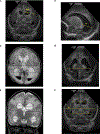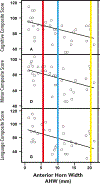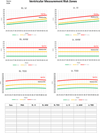Management of Post-hemorrhagic Ventricular Dilatation in the Infant Born Preterm
- PMID: 32739263
- PMCID: PMC8297821
- DOI: 10.1016/j.jpeds.2020.07.079
Management of Post-hemorrhagic Ventricular Dilatation in the Infant Born Preterm
Conflict of interest statement
The authors declare no conflicts of interest.
Figures





Comment on
-
Outcomes Following Post-Hemorrhagic Ventricular Dilatation among Infants of Extremely Low Gestational Age.J Pediatr. 2020 Nov;226:36-44.e3. doi: 10.1016/j.jpeds.2020.07.080. Epub 2020 Jul 30. J Pediatr. 2020. PMID: 32739261 Free PMC article.
-
Randomized Controlled Early versus Late Ventricular Intervention Study in Posthemorrhagic Ventricular Dilatation: Outcome at 2 Years.J Pediatr. 2020 Nov;226:28-35.e3. doi: 10.1016/j.jpeds.2020.08.014. Epub 2020 Aug 12. J Pediatr. 2020. PMID: 32800815 Clinical Trial.
References
-
- Kinney HC, Volpe JJ. Organizational events In: Volpe JJ, Inder TE, Darras BT, deVries LS, duPlessis AJ, Neil JJ, et al., editors. Volpe’s Neurology of the Newborn. Chapter 7, 6th ed. Philadelphia, PA: Elsevier; 2018. p. 145–75.
-
- Volpe JJ. Dysmaturation of premature brain: Importance, cellular mechanisms and potential interventions. Pediatr Neurol. 2019;95:42–66. - PubMed
Publication types
MeSH terms
Grants and funding
LinkOut - more resources
Full Text Sources
Medical

